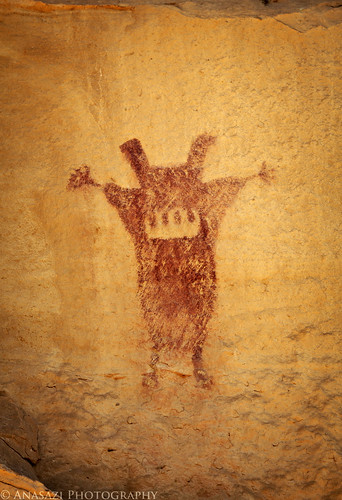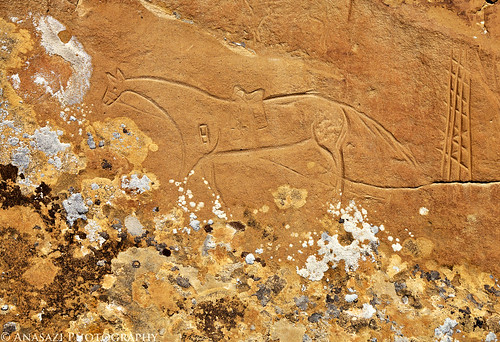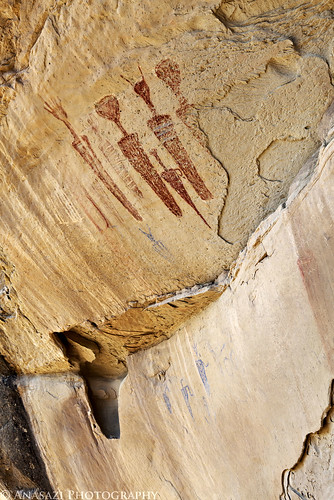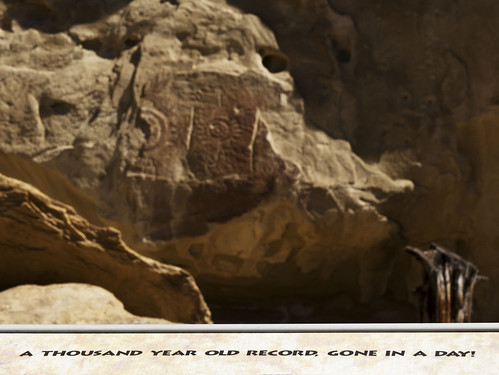Say hello to The Guardian. This prominent figure greets you as you enter the Canyon Pintado National Historic District from the south. Located at the White Hands site, it’s a very short walk to visit this pictograph along the highway. Is this anthropomorph Barrier Canyon Style or is it Fremont? According to the interpretative sign below, it is believed that this figure might be from a transitional period between Barrier Canyon Style and Fremont. Either way, this is a very unique pictograph in a highly visible location.
Horse & Lichen
This historical and beautifully incised horse is carved right above the very colorful lichen on this sandstone wall. It is believed that this horse was most likely created by a Ute which may depict their encounters with the U.S. Calvary. The number ‘8’ on the front hip of the horse is most likely a brand that has been traced back to General Crook’s command, who was chasing the Apache through Arizona and New Mexico in the late 1800s. It’s possible this carving may be of a captured horse.
While visiting this site, the biting gnats were terrible! If I stopped moving for more than a few seconds they swarmed around me and were unbearable. As I searched the area I was lucky to find a few of the petroglyphs, including this one, and managed to pull off a few photos before the bugs overran me. I’m sure I missed some petroglyphs at this site since I had to keep moving, so I will need to return another time to finish exploring.
Carrot Men Panel
Is it Barrier Canyon Style? Is it Fremont? Is is some transitional period in between? I’m not quite sure, but the Carrot Men Panel is very unique! The heads on some of these figures remind me of the pictographs found in Black Dragon Canyon and even Temple Mountain Wash. This is a great site to visit, except when the biting gnats are out in full force like they were today!
A Thousand Year Old Record, Gone in A Day!
Rock art is thought to represent the spiritual expression of people who lived here long ago. The fremont people who lived here from about AD 500 to AD 1100 left symbols on the rock which had tremendous meaning to them. The Shield site remains an example of what vandalism can do to a once beautiful and interesting archaeological site.
Parties, camping, tree cutting and outright deliberate destruction of the rock art have destroyed this site. No scientific knowlege will ever be gained here. No quiet enjoyment is possible. And, no one can feel anything but sorrow while viewing the remains of symbols left by people over a thousand years ago.
It belongs to you.



